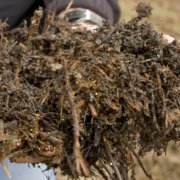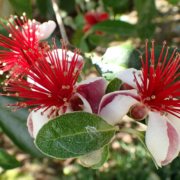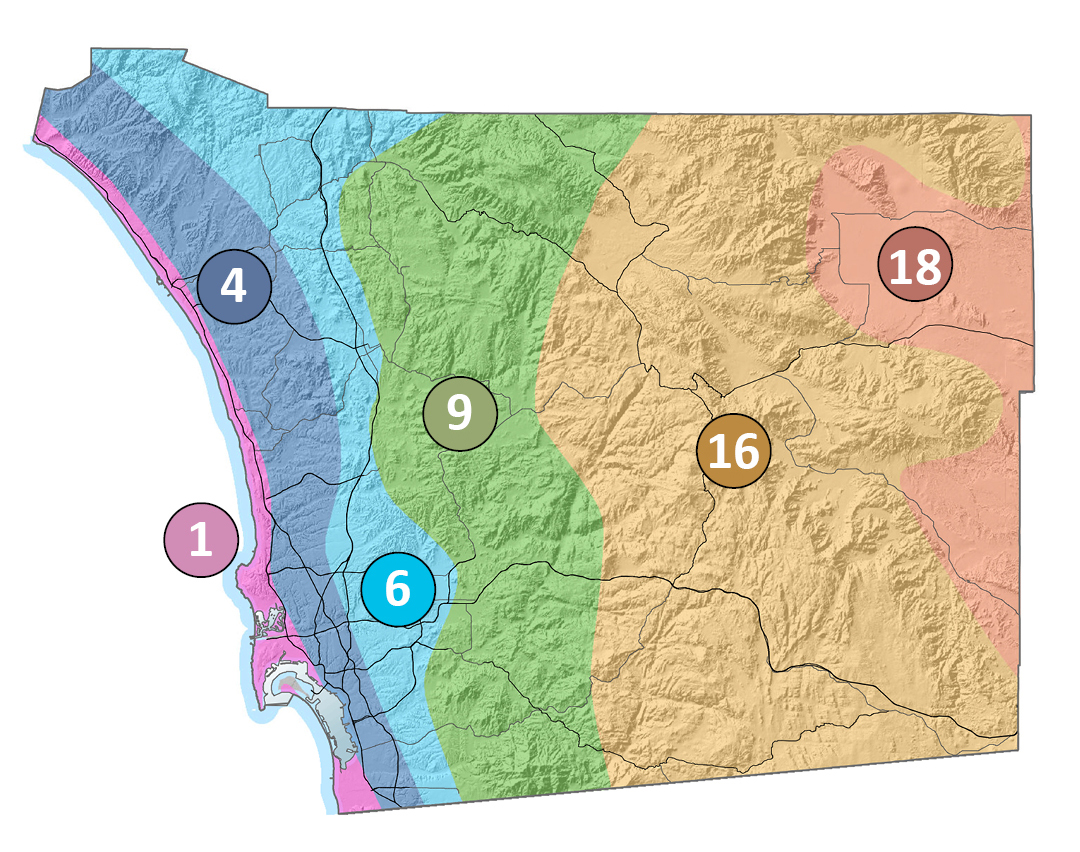Mulching for Water-Use Efficiency
Even though temperatures rarely drop below freezing in most parts of Southern California, many people overlook winter when it comes to caring for their native plants and traditional landscapes. There are many things that can help keep landscapes healthy and water-efficient, especially during the winter months when there is more natural rainfall. One of these things is to use a layer of mulch to prevent water loss and insulate landscapes during colder times.
Mulch types
For maximum sustainability and to support plant health, use a locally sourced and blended organic mulch. If the goal is to create a walking trail or other area that is not intended to grow plants, consider a longer lasting wood mulch or inorganic mulch. Organic mulch may be available at low cost from local landfill recycling centers. For optimum soil and plant health, look for a mulch that has a blend of leaves, stems and woody portions of the plants. This type of blended mulch will break down over time and add organic matter to the soil to support natural biological processes, prevent erosion, maintain soil moisture and support water infiltration into the landscape. In addition, composted blended mulch has gone through a natural maturation process that kills weed seeds and pathogens.
Mulching tips
Apply a layer of mulch three to four inches deep and remember to keep it at least four to six inches away from plant stems to avoid creating a condition that is prone to disease. In areas where the goal is to build the health of the soil, avoid using weed guard type fabrics. Pulling weeds and clearing debris also helps to increase the efficiency of mulch and removes hiding places for pests.
Reduce irrigation costs
With a layer of mulch on your landscape, you can conserve water because the layer of mulch will help keep moisture in the soil – this is especially important because most plants grow deeper roots in the fall and early winter. Be sure to also manage your irrigation by setting your irrigation schedule seasonally, controlling overspray and fixing any other problems promptly.
Winter Landscape Tip: Tell your landscaper about FREE training. Webinars in English and Spanish include sustainable landscape principles and irrigation essentials. Learn more: https://qwel.watersmartsd.org.
Qualified Water Efficient Landscaper training is made possible by the San Diego County Water Authority, its member agencies and the County of San Diego.
Want more tips for water-use efficiency and maintaining your sustainable landscapes? Check the free WaterSmart education classes and on-demand videos: WaterSmartSD.org.





